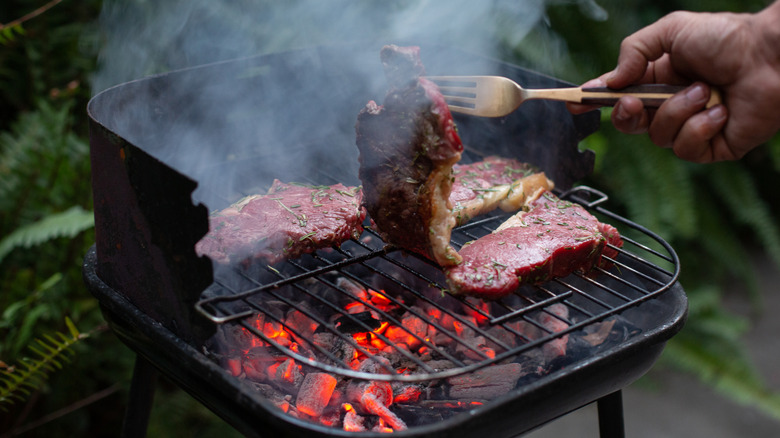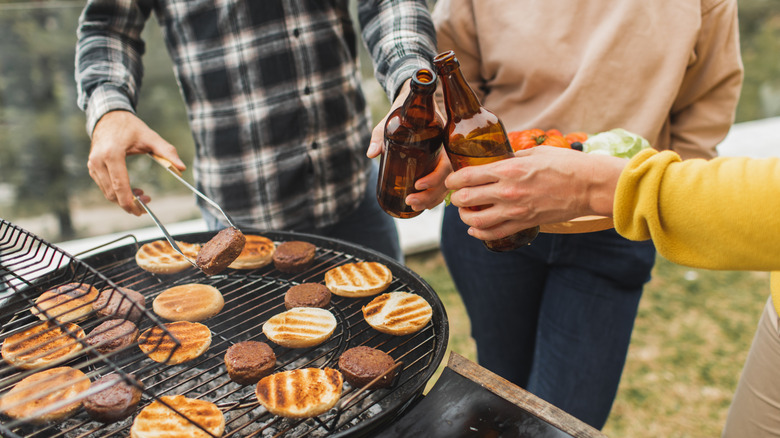What Is The Stall In Barbecuing And What Can You Do To Control It?
Barbecuing can be fun and rewarding, especially when cooking while camping or having a backyard cookout. You can get together with family and friends and spend time outside while preparing delicious food. However, there are a lot of mistakes you can make while grilling, one of which is letting the stall affect your cooking. Tasting Table spoke exclusively to chef Billy Parisi, a classically trained culinary school graduate and food blogger, about what stalling while grilling means and how it can best be managed when barbecuing.
Chef Parisi says, "A barbecue stall occurs when the internal temperature of the meat levels off and can even drop a few degrees. The moisture that collects on the meat's surface evaporates and starts to cool, offsetting the heat from the BBQ or smoker. Essentially, it's sweating and trying to cool off." This can be a problem, as the goal for grilling is to get the meat to the right temperature; the stalled temperature can stay low for a long time, putting your grilling on hold. It often happens at about 150 degrees Fahrenheit, while the optimal temperature for grilled meat is a bit over 200 degrees, so simply taking the meat off the grill when the temperature stalls isn't an option. While the stall is mostly associated with slow-cooked meats like brisket, it can also happen on quick-cook items like steaks, too. Luckily, Parisi provides us with ways to both reduce the stall and to get the meat to keep cooking when it hits the stall: Keep a moist environment and wrap the meat.
Controlling and counteracting the stall
Unfortunately, there is no real way to completely prevent a stall. As chef Parisi says, "The stall isn't completely preventable, but you can countermeasure by maintaining a moist environment inside the grill or smoker. You can add a pan of water or spray the meat with a liquid solution, such as vinegar, apple juice, or beer. This is known as a spritz." With extra moisture surrounding the meat, there's less evaporation and therefore less cooling on the surface of the meat. In addition, spraying it with something like apple juice or beer can add extra flavor to your burgers. Check out our list of the best beers for your cookout, as some work better with the taste of meat than others.
Even if the environment is kept moist, however, you'll more than likely still hit a stall. "The best thing you can do once you hit the stall is remove the meat and wrap it," Parisi says. "This is also known as the Texas crutch. This helps to keep the meat moist and it will sort of steam it's way through the stall. I like to wrap in butcher's paper, but it's also commonly done in foil. Additionally, increasing the temperature can help overcome the stall." These methods are fairly self-explanatory; wrapping the meat keeps the moisture from evaporating away, and upping the temperature makes it easier to power through the cooling. If you choose to use butcher paper like Parisi, consider using water-resistant peach butcher paper for the best results.

